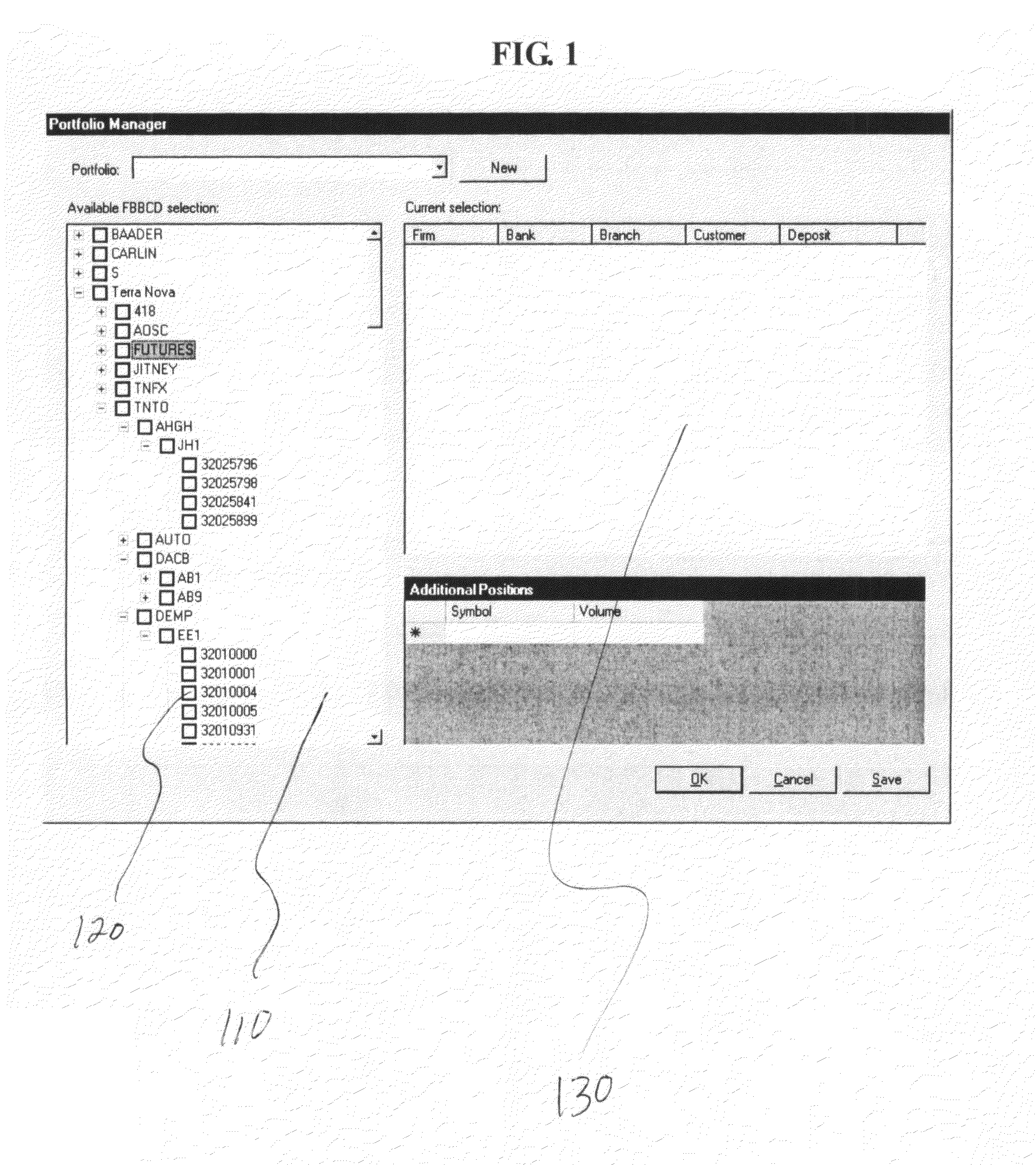Methods and systems for risk management
a risk management and system technology, applied in the field of methods and systems for risk management, can solve the problems of broker-dealers today facing unique challenges in risk management, various risk-taking behaviors of traders complicating company credit policies and risk management processes, and asset value failing to cover leverage risk, etc., to achieve immediate productivity gain, reduce risk, and mitigate risk
- Summary
- Abstract
- Description
- Claims
- Application Information
AI Technical Summary
Benefits of technology
Problems solved by technology
Method used
Image
Examples
Embodiment Construction
[0033]Risk Manager Software
[0034]In one aspect, the present invention comprises Risk Manager software that preferably has two major components: Credit at Risk (CaR) and Value at Risk (VaR).
[0035]VaR is a software component whose user interface portion resides in Risk Analyzer (the client) and whose analytics portion resides in RiskEngine (the server). It pulls intermediate measures out of the RiskEngine onto a user's desktop, computes the final measures, and displays a report based on the user's selection criteria.
[0036]CaR is a near real-time reporting tool that monitors broker account credit risk—for example, CaR preferably computes net asset value and margin requirement on each account based on a broker dealer's margin rule settings; derives account buying power; and warns risk managers when an account violates the broker dealer's credit policy. If the account user violates the broker dealer's margin rules severely, the risk manager may use margin calls and / or forced liquidation....
PUM
 Login to View More
Login to View More Abstract
Description
Claims
Application Information
 Login to View More
Login to View More - R&D
- Intellectual Property
- Life Sciences
- Materials
- Tech Scout
- Unparalleled Data Quality
- Higher Quality Content
- 60% Fewer Hallucinations
Browse by: Latest US Patents, China's latest patents, Technical Efficacy Thesaurus, Application Domain, Technology Topic, Popular Technical Reports.
© 2025 PatSnap. All rights reserved.Legal|Privacy policy|Modern Slavery Act Transparency Statement|Sitemap|About US| Contact US: help@patsnap.com



